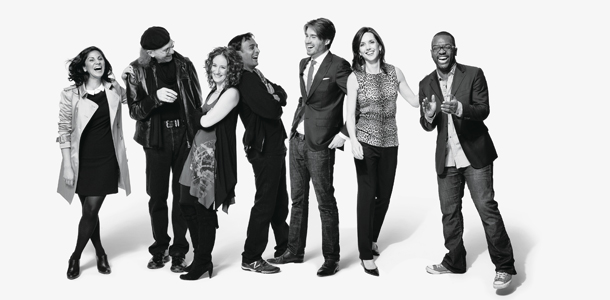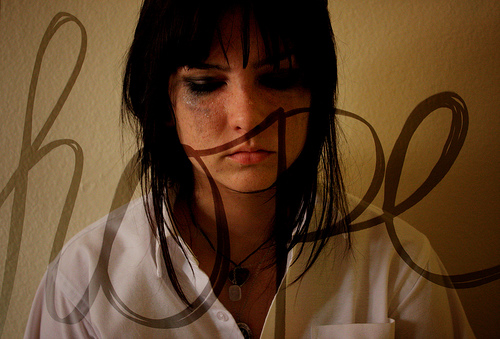I spent the last week at the World Economic Forum in Davos, Switzerland. When my friends (y’all) learned I was going, some were supportive while others were horrified. A few called me an outright traitor. Given how much mythology there is around this event, I want to take a moment and briefly share my own experience there.
If you read news articles about WEF, you get the impression that it’s a high stakes event where many of the world leaders gather to discuss governance and finance. (Journalists especially love to highlight when said leaders snicker or snark at one another.) Indeed, there is that part of the event, but that wasn’t actually the event that I attended. I spent the week primarily talking with civil society leaders, NGOs, representatives from the UN, and esteemed scholars. For example, I did a Refugee Run sponsored by Crossroads and the UN Refugee Agency which was a (gentle) simulation of life in a refugee camp followed by a few former refugees (including one child soldier) telling their story. I attended a Civil Society event where I spoke with representatives from human rights organizations, the union/labor movement, and NGOs working to address some of the hardest problems in society. I had a lunch with a university president talking about the role of technology in higher ed. I had dinner with an esteemed physicist, an author I admire, and a network scientist where we talked about how to engender and support creativity. I gave advice to a group of women trying to combat the societal valuation of consumption. I brainstormed with a group of young attendees who had done amazing work in the education sector around the globe. I attended a dinner with complexity analysts, newspaper executives, and brain scientists where we talked about how fear functions in society. I share these things not to brag, but because my conversations in Davos were inspiring, creative, and stimulating. I came out of the event feeling as though I was able to contribute to discussions among people who were truly working to make the world a better place. My hope is that my presence there affected others in the same way they affected me.
This is not to say that WEF/Davos is not an odd – and at times, deeply problematic – place. It is. It’s many things good, bad, and ugly. While I have never met a WEF employee who makes me depressed or angry, I cannot say the same for some of the attendees. The Forum desperately wants people from different sectors to learn from one another to address the world’s problems, but there are plenty of attendees who are more interested in maintaining the status quo. WEF evolves each year to try to find new ways to bring a social conscience into economic discussions, but that doesn’t mean that everyone wants to listen. For example, Desmond Tutu inspired the audience with his remarks about the importance of bringing women into the political and economic sphere, but I can’t say that the majority of those who needed to hear it were listening. To give this issue some context… Less than 20% of those in attendance were women. Among the young global leaders and global shapers (chosen by the Forum), it was close to 50/50. Many of the speakers (chosen by the Forum) were women. But among the corporate delegations (chosen by companies’ executives), I wouldn’t be surprised if the number was less than 5%.
Comparing WEF to any other event is hard, but I cracked a smile when Nick Bilton remarked that WEF is a lot like Burning Man. In so many ways, he’s right. A lot of people overwhelm one extreme weather location and battle non-normative conditions (Davos is crowded, covered in ice, and extremely difficult to navigate) to interact with others. In both events, there are so many different kinds of communities colliding – sometimes interacting and sometimes not. And both cost gobs of money to attend, thereby excluding all sorts of people. What differentiates the two events is how status is negotiated. At WEF, boundaries are explicitly managed: you are in or you are out, you are important or you are not. You are told over and over again whether or not you matter and access is strictly enforced. Bourdieu would call this “cultural capital.” Most people view Burning Man as much more open and accepting, but it too is governed by status games. The difference is that you don’t know whether or not you’ve been included in whatever is high status. Burning Man – like a lot of underground culture – is all about being “in the know.” Thornton would call this “subcultural capital.” You may instinctively think: “At least anyone can go to Burning Man!” That’s not true. Not only are the tickets expensive, but they’re now a lottery; both are exclusionary mechanisms. You may retort: “But BM tickets are only $400ish; it costs tens of thousands of dollars to go to Davos!” If you try to show up to BM without a ticket, you literally cannot get in. If you make your way to Davos, you can get into a surprisingly large amount of the event with only a hotel pass ($55). Yes, it’s brutally painful, but I met countless people squatting the event and engaging with folks outside of the core sessions. More importantly, I met numerous people from the public sector or civil society who were fully covered – their flight, hotel, and entrance completely paid for because they were doing good in the world without a large paycheck. Even BM attendees who come in for free because they work the event have to pay to get there and pay for their equipment. BM espouses openness while WEF is unabashedly elitist. I appreciate BM’s effort to become its idealistic self, but I also appreciate WEF’s brutal honesty regarding who it is.
One way of reading this post is as a justification of WEF and, in some ways, it is. Don’t get me wrong: there were a lot of people there who I think are to blame for the global economic crisis we’re in. And there were people there who have done serious damage to our planet in so many ways. But there were also people there who I think have radically changed the world for the better. It’s easy to hate WEF, but there’s more to it than meets the eye. I continue to be impressed by the thoughtfulness of the people at the WEF and Professor Schwab’s attempts to bridge divides. He and the WEF genuinely want to make the world a better place. We can reasonably argue about whether or not their tactics are effective, but declaring the institution evil achieves nothing.








 Over the last couple of years, I’ve laid awake at night asking myself uncomfortable questions about bullying and teen suicide. I don’t have answers to most of the questions that I have, but I’m choosing to voice my questions, fears, and doubts because I’m not confident that our war on bullying is taking us down the right path. I’m worried about the unintended consequences of our public discourse and I’m worried about the implications that our decisions have on youth, particularly in this high-stakes arena. So I’m asking these four tough questions in the hopes that we can collectively step back and think critically about how we’re addressing bullying as a public issue.
Over the last couple of years, I’ve laid awake at night asking myself uncomfortable questions about bullying and teen suicide. I don’t have answers to most of the questions that I have, but I’m choosing to voice my questions, fears, and doubts because I’m not confident that our war on bullying is taking us down the right path. I’m worried about the unintended consequences of our public discourse and I’m worried about the implications that our decisions have on youth, particularly in this high-stakes arena. So I’m asking these four tough questions in the hopes that we can collectively step back and think critically about how we’re addressing bullying as a public issue.  Networked technologies – including the internet, mobile phones, and social media – alter how information flows and how people communicate. There is little doubt that technology is increasingly playing a role in the practices and processes surrounding human trafficking: the illegal trade of people for commercial sexual exploitation, forced labor, and other forms of modern-day slavery. Yet, little is known about costs and benefits of technology’s role. We do not know if there are more human trafficking victims as a result of technology, nor do we know if law enforcement can identify perpetrators better as a result of the traces that they leave. One thing that we do know is that technology makes many aspects of human trafficking more visible and more traceable, for better and for worse. Focusing on whether technology is good or bad misses the point; it is here to stay and it is imperative that we understand the role that it is playing. More importantly, we need to develop innovative ways of using technology to address the horrors of human trafficking.
Networked technologies – including the internet, mobile phones, and social media – alter how information flows and how people communicate. There is little doubt that technology is increasingly playing a role in the practices and processes surrounding human trafficking: the illegal trade of people for commercial sexual exploitation, forced labor, and other forms of modern-day slavery. Yet, little is known about costs and benefits of technology’s role. We do not know if there are more human trafficking victims as a result of technology, nor do we know if law enforcement can identify perpetrators better as a result of the traces that they leave. One thing that we do know is that technology makes many aspects of human trafficking more visible and more traceable, for better and for worse. Focusing on whether technology is good or bad misses the point; it is here to stay and it is imperative that we understand the role that it is playing. More importantly, we need to develop innovative ways of using technology to address the horrors of human trafficking.